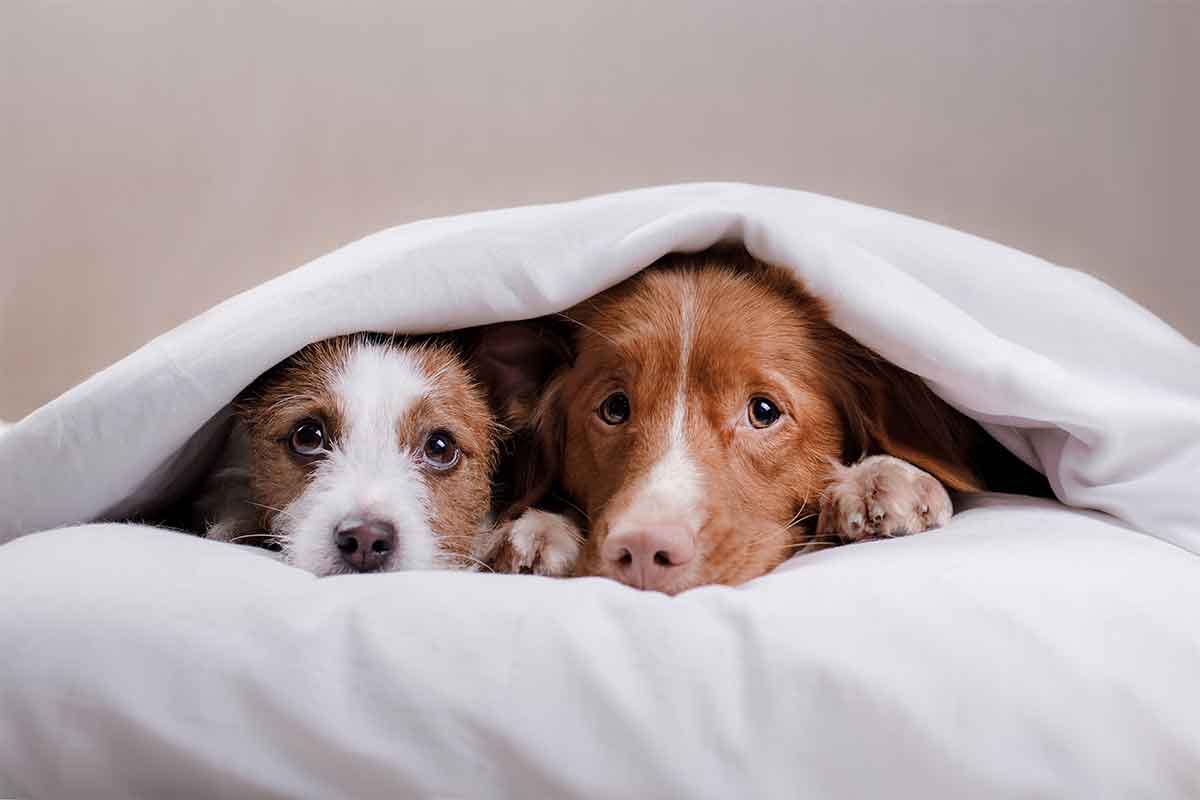A good friend of mine is afraid of spiders. She’s not so afraid that she’s going to burn her house down if one is inside, but as she says, perhaps she’ll just scorch the house a bit. Her fear is not incapacitating, but it is overwhelming enough that she must do something about the spider before she can concentrate on anything else.
One of my previous dogs, Sisko, was afraid of cows. He’d never met a cow or had a bad experience with a cow while he lived with us, but we adopted him at about six months of age so he may well have been chased by a cow and frightened before he came home with us. Or perhaps he simply thought a cow strange enough to be potentially dangerous.
Why Do Animals Have Fears?
Humans, dogs, cats, and other animals all have fears. My friend’s fear of spiders isn’t unusual; many people are afraid of them. Granted, there are black widows and brown recluse spiders in our region and they are potentially dangerous but harmless garden spiders are much more common.
When trying to understand fear in our dogs, it’s important to remember that fear works like an instinct to protect him when he’s afraid. When faced with something that is unsafe or dangerous, or sometimes just completely unknown, fear makes the dog want to avoid that danger.
Unfortunately, fear can also be incapacitating. Too much fear, or an overwhelming fear, can interfere with normal reactions or thought. A dog who is overwhelmed by a fear may freeze and not react at all. For example, when Sisko saw cows, he wanted to run away. If he did, and pulled his leash out of my hands, that would be horrible. He could have become lost or hit by a car. Another possible reaction to fear is becoming frozen in place; a reaction that could have been devastating if a cow had charged him.
Ignoring Fear Rarely Helps
In years past, dog owners were told to ignore their dog’s fear. Experts said that comforting the dog could potentially be seen by the dog as praise for the fear. Correcting the dog for being afraid was, of course, never a good course of action. But when owners were told to ignore the fear and did, the dog was left to his own devices.
Unfortunately, most dogs who are afraid are in fight, flight, or freeze mode. They are going to fight the danger, run away from it, or freeze in place. In this mode, logical thought is difficult or impossible. Ignoring the dog’s fear, or ignoring the dog, is much the same as abandoning him.
In addition, fears can multiply. A fear that is ignored or goes untreated may expand and increase. Sisko’s fears of cows might have eventually encompassed horses, goats, and other livestock.
Think of my friend and her fear of spiders. If I’m at her house and she sees a spider, should I not help her to kindly dispose of the spider? Or should I walk away, turn on the TV, and wait until she figures out what to do? It seems much kinder to help her.
The same applies to our dogs. Don’t ignore the fear, but instead help them with your support and strength. You can stand by your dog’s side, touch him—even with your hand just resting on his shoulder—or move him away from the object of his fear. Equally as important is to focus on being unworried yourself. If we act concerned or afraid, or attempt to soothe the dog by saying, “It’s okay,” which we only say when in the dog’s mind it is not okay, we could exacerbate his fear. In the moment your support can help alleviate the fear, yet it does not teach your dog how to overcome the fear. Talk to your veterinarian if your dog displays a pronounced fear to unavoidable situations. Without proper behavioral training to address the fear, it will continue or potentially get worse.
This article was reviewed/edited by board-certified veterinary behaviorist Dr. Kenneth Martin and/or veterinary technician specialist in behavior Debbie Martin, LVT.








